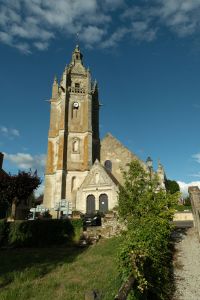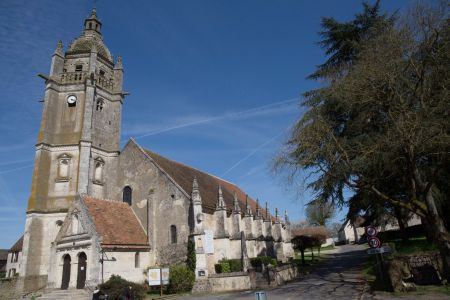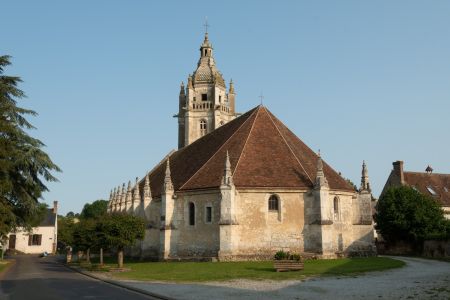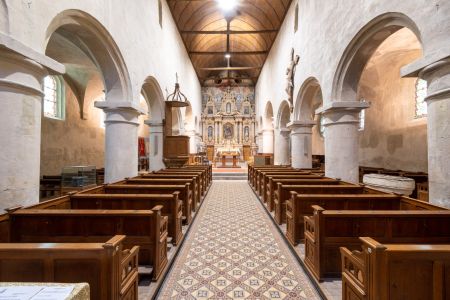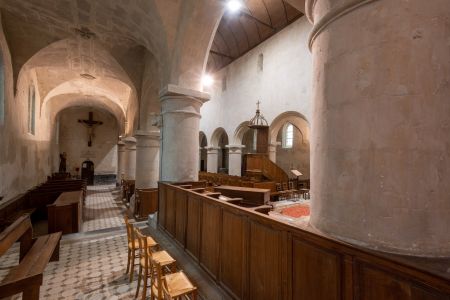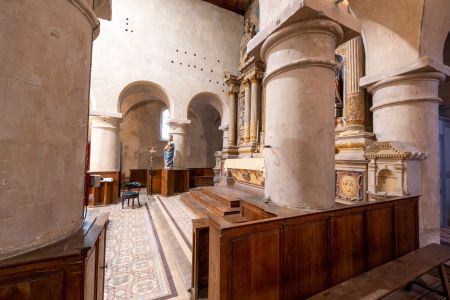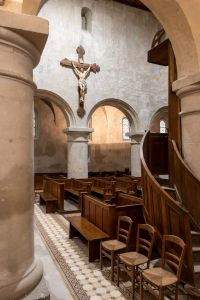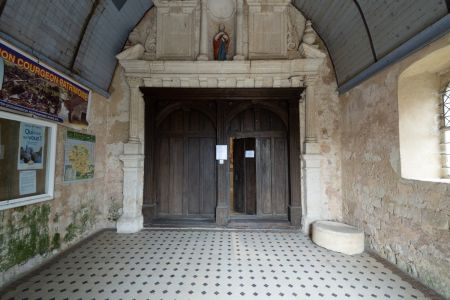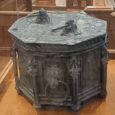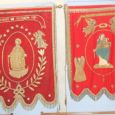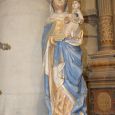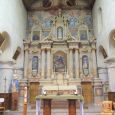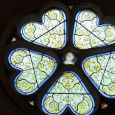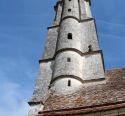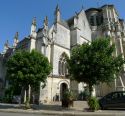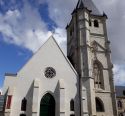Church | 1618 - 1633 | Romanesque, Classical | Catholic Church




Map
Opening hours
01 January - 31 December
Mon 8.00 - 17.00
Tue 8.00 - 17.00
Wed 8.00 - 17.00
Thu
Fri 8.00 - 17.00
Sat
Sun
For all visits on Thursdays, Sundays or during the holiday period at the Café de la Place, please contact +33 6 23 41 87 52.
Guided tour
Description
In the 17th century, Toussaint Durand, a priest and builder with the support of the village community, transformed the original Romanesque church with its single nave and flat apse into an imposing edifice, whose signature feature is the tower built in 1632.
The main nave was extended by a semi-circular choir. Two aisles, supported by pinnacled buttresses, were added around 1625. They open onto the central nave through eight semi-circular arches supported by cylindrical columns. The imposing hexagonal limestone bell tower has four storeys, the last of which is surrounded by a balustrade. It is covered by a dome of flaked stone and crowned by a fleur-de-lys lantern.Translated with www.DeepL.com/Translator (free version)
Photos
Remarkable elements
Baptismal basin
This octagonal pewter and lead basin, which was placed in stone baptismal fonts, bears witness to the ornamental profusion of Renaissance art. It is a work of transition from Gothic art, as highlighted by its eight napkin-fold panels separated by hooked buttresses. It is completed by four lion heads bearing hooks and its lid is decorated with a twisted moulding.
Translated with www.DeepL.com/Translator (free version)
Charité de Courgeon
Toussaint Durand, the parish priest of Courgeon, decided to found a brotherhood of the Rosary of Charity in his church to assist with the burials of all the inhabitants of the parish. This foundation was accepted on 10 November 1624 by Monseigneur Berthaut, Bishop of Séez.
Translated with www.DeepL.com/Translator (free version)
Statue of the Virgin and Child
This 16th-century polychrome wooden sculpture shows the Virgin crowned. The Infant Jesus, resting on the Virgin's left arm, holds the crucifix globe in his left hand. This work has been protected as a Historic Monument since 1994.
Translated with www.DeepL.com/Translator (free version)
High altar
This 17th-century high altar is made of white, painted and gilded stone, which lines the nave below the first bay at the back of the choir. It comprises an altar decorated with a lamb and a two-tier altarpiece. On the first level, a painting depicting the Assumption of the Virgin adorns the centre. It is surrounded on either side by two fluted columns with Corinthian capitals supporting a broken pediment. On either side, in a niche, are statues of Saint Joseph (left) and Saint Santin (right), the church's patron saint. On the second level, a statue of the Virgin and Child is surrounded by two paintings.
The complex has been protected as a Historic Monument since 1968.
Translated with www.DeepL.com/Translator (free version)
Stained glass
The north rose window, dated 1633, was created in 1901 by the Argentan glass painter Emile Bazire. In the centre, the Virgin Mary is portrayed. It has been protected as a Historic Monument since 1975.
A second rose window also features a portrait of Christ.
Translated with www.DeepL.com/Translator (free version)
Church tower
The hexagonal tower of the church was raised four storeys between 1620 and 1623, covered by a dome in 1629 and the lantern of the dome in 1632. The top storey houses the belfry bearing the three bells.
You can walk outside the tower along a path protected by a stone balustrade. Pinnacles have been installed at the four corners of the tower to support the buttresses resting on the base of the cupola.
The bell tower has been protected as a Historic Monument since 1909 and the church since 1926.
Translated with www.DeepL.com/Translator (free version)



